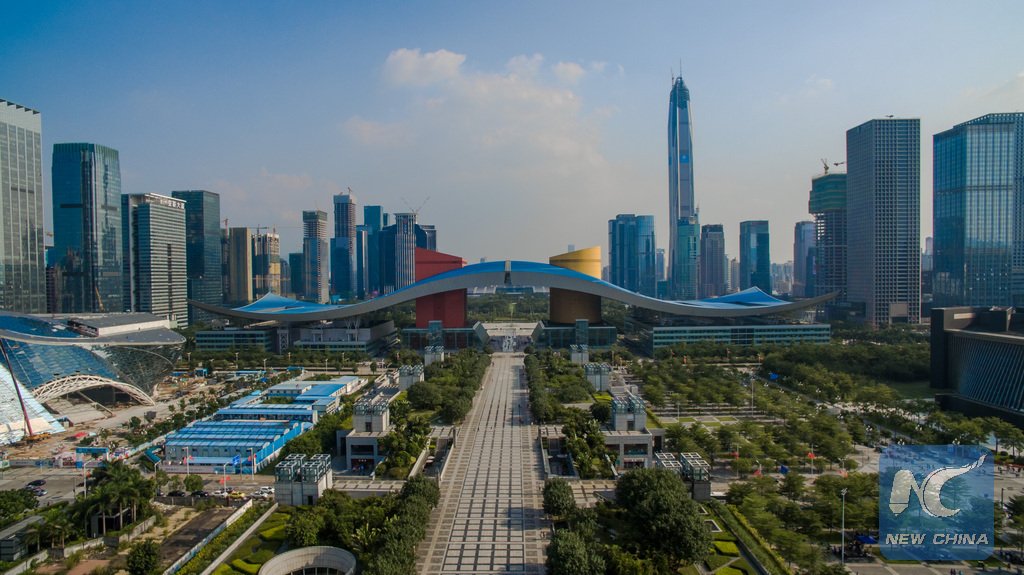
Since taking office in late 2012, China's leadership has proposed three major strategies to boost growth as the Chinese economy enters a "new normal" with slower growth and the world's remains
unstable. The "Belt and Road" regional trade and infrastructure network, coordinated development of Beijing with neighboring Tianjin and Hebei, and the Yangtze River economic belt serve as a boost for the country's economic growth and are offering China's prescription for the world in a difficult economic recovery.On Jan. 16, the Asian Infrastructure Investment Bank (AIIB), a multilateral bank initiated by China, started operating in Beijing, financing construction of airports, mobile phone towers, railways and roads in Asia. Raised by President Xi Jinping in 2013, the Belt and Road Initiative refers to the Silk Road Economic Belt, linking China with Europe through Central and Western Asia, and the 21st Century Maritime Silk Road, connecting China with Southeast Asian countries, Africa and Europe. Over two years since the initiative was conceptualized, China has committed 40 billion U.S. dollars to establishing the Silk Road Fund, formed the AIIB, and launched construction projects including a transcontinental railway from southwest Chongqing Municipality to Europe, the Greek port of Piraeus, as well as the Jakarta-Bandung high-speed railway, in cooperation with countries along the Belt and Road. The first cargo train from China to Iran arrived in Tehran on Feb. 15, the project being an outcome of Xi's state visit to Iran at the beginning of this year. The train started from Yiwu in Zhejiang Province, a famous production base for small commodities and one with close trade ties with countries in the Middle East. In 2015, Chinese companies invested in 49 countries related to the Belt and Road, with a total investment volume of 14.82 billion U.S. dollars, a year on year increase of 18.2 percent, according to commerce ministry figures. The data also showed Chinese companies inked 3,987 project contracts with about 60 Belt and Road countries, with a total contract volume of 92.64 billion U.S. dollars, last year. BEIJING, Feb. 21 (Xinhua) -- Since taking office in late 2012, China's leadership has proposed three major strategies to boost growth as the Chinese economy enters a "new normal" with slower growth and the world's remains unstable. The "Belt and Road" regional trade and infrastructure network, coordinated development of Beijing with neighboring Tianjin and Hebei, and the Yangtze River economic belt serve as a boost for the country's economic growth and are offering China's prescription for the world in a difficult economic recovery.
BELT AND ROAD INITIATIVE
On Jan. 16, the Asian Infrastructure Investment Bank (AIIB), a multilateral bank initiated by China, started operating in Beijing, financing construction of airports, mobile phone towers, railways and roads in Asia. Raised by President Xi Jinping in 2013, the Belt and Road Initiative refers to the Silk Road Economic Belt, linking China with Europe through Central and Western Asia, and the 21st Century Maritime Silk Road, connecting China with Southeast Asian countries, Africa and Europe. Over two years since the initiative was conceptualized, China has committed 40 billion U.S. dollars to establishing the Silk Road Fund, formed the AIIB, and launched construction projects including a transcontinental railway from southwest Chongqing Municipality to Europe, the Greek port of Piraeus, as well as the Jakarta-Bandung high-speed railway, in cooperation with countries along the Belt and Road. The first cargo train from China to Iran arrived in Tehran on Feb. 15, the project being an outcome of Xi's state visit to Iran at the beginning of this year. The train started from Yiwu in Zhejiang Province, a famous production base for small commodities and one with close trade ties with countries in the Middle East. In 2015, Chinese companies invested in 49 countries related to the Belt and Road, with a total investment volume of 14.82 billion U.S. dollars, a year on year increase of 18.2 percent, according to commerce ministry figures. The data also showed Chinese companies inked 3,987 project contracts with about 60 Belt and Road countries, with a total contract volume of 92.64 billion U.S. dollars, last year.
BEIJING-TIANJIN-HEBEI
Beijing and its neighboring Tianjin Municipality and Hebei Province are regarded as a key region in the country's promotion of regional economic integration. The leadership approved a roadmap for that cause in April, 2015. During the Spring Festival holiday from Feb. 7 to Feb. 13, over 4.41 million tourists visited Tianjin, with three in 10 coming from Beijing and Hebei. Tianjin has become a traffic hub as several high speed rail routes now run through the city, linking the region with other parts of China as well as facilitating transportation within the area. One-hour rail commuting circles connecting Beijing, Tianjin and Hebei's Shijiazhuang and Tangshan are expected to be formed in the near future. Meanwhile, environmental concerns have not been overlooked in the coordinated development. In November, authorities in Beijing, Tianjin and Hebei jointly issued an agreement on coordinating environmental protection efforts.
No comments:
Post a Comment